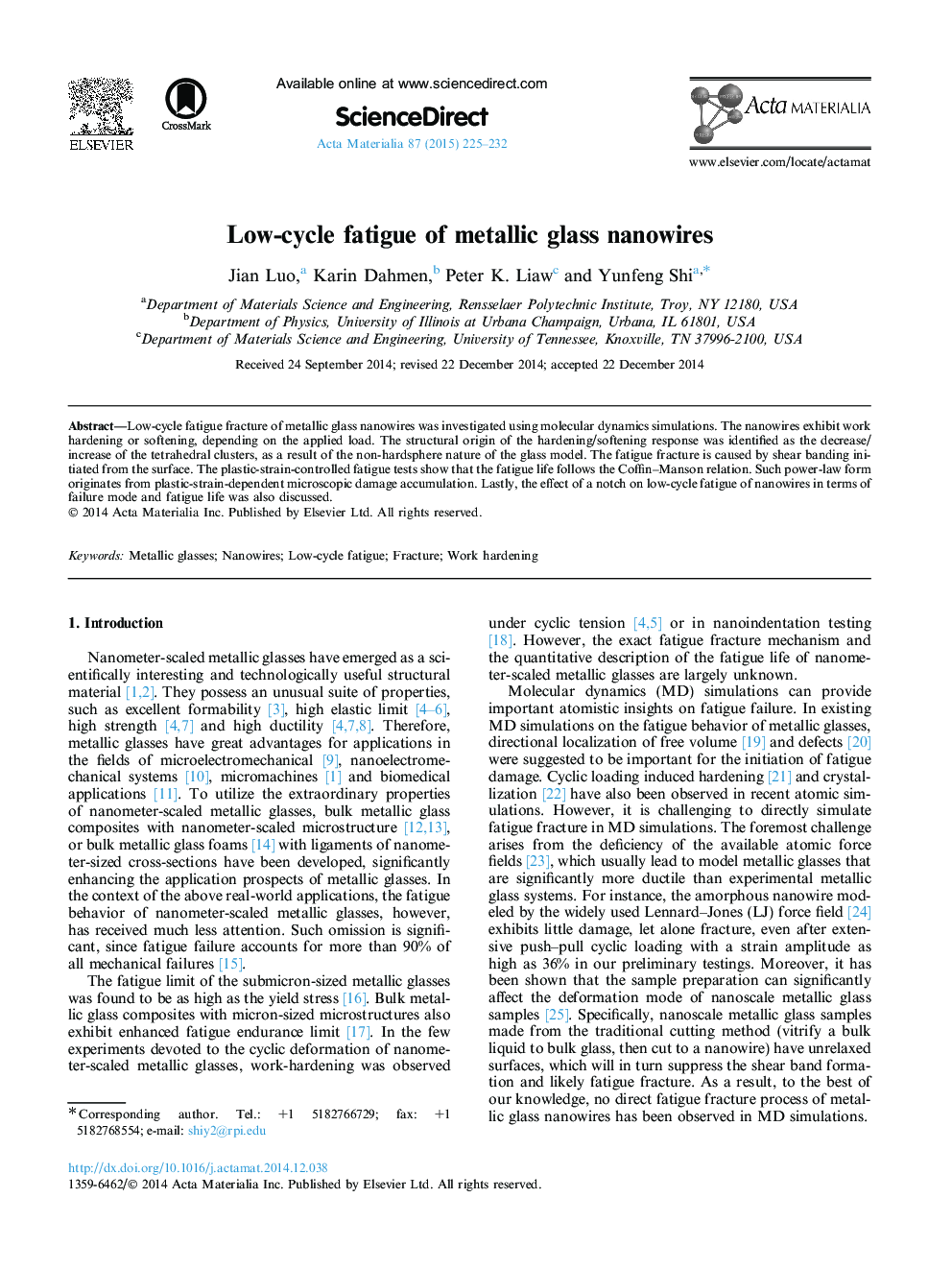| Article ID | Journal | Published Year | Pages | File Type |
|---|---|---|---|---|
| 7880620 | Acta Materialia | 2015 | 8 Pages |
Abstract
Low-cycle fatigue fracture of metallic glass nanowires was investigated using molecular dynamics simulations. The nanowires exhibit work hardening or softening, depending on the applied load. The structural origin of the hardening/softening response was identified as the decrease/increase of the tetrahedral clusters, as a result of the non-hardsphere nature of the glass model. The fatigue fracture is caused by shear banding initiated from the surface. The plastic-strain-controlled fatigue tests show that the fatigue life follows the Coffin-Manson relation. Such power-law form originates from plastic-strain-dependent microscopic damage accumulation. Lastly, the effect of a notch on low-cycle fatigue of nanowires in terms of failure mode and fatigue life was also discussed.
Related Topics
Physical Sciences and Engineering
Materials Science
Ceramics and Composites
Authors
Jian Luo, Karin Dahmen, Peter K. Liaw, Yunfeng Shi,
